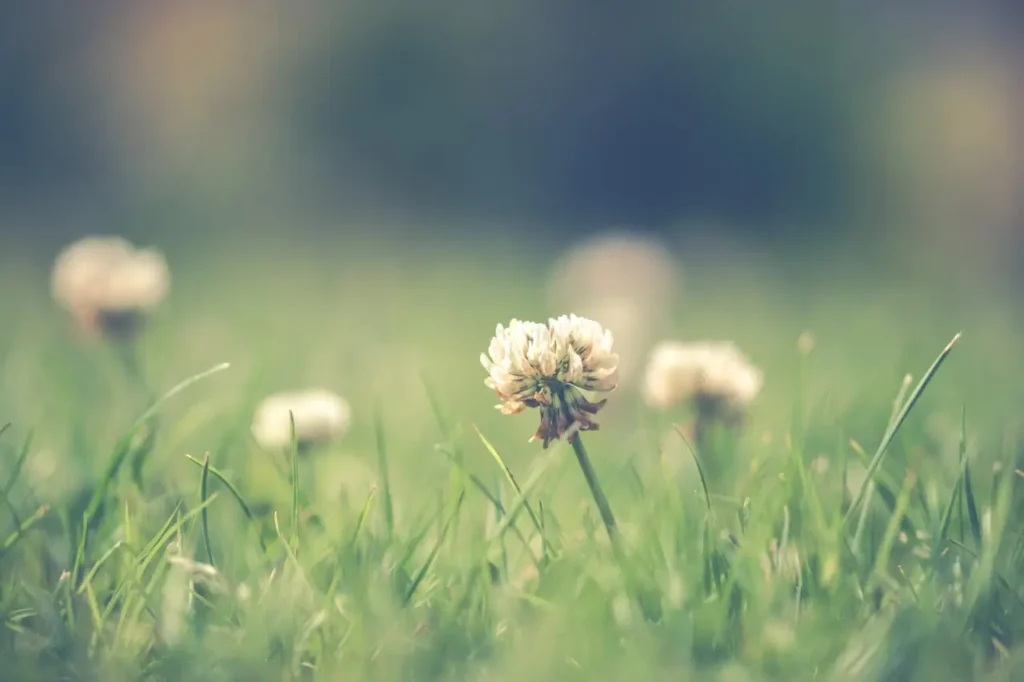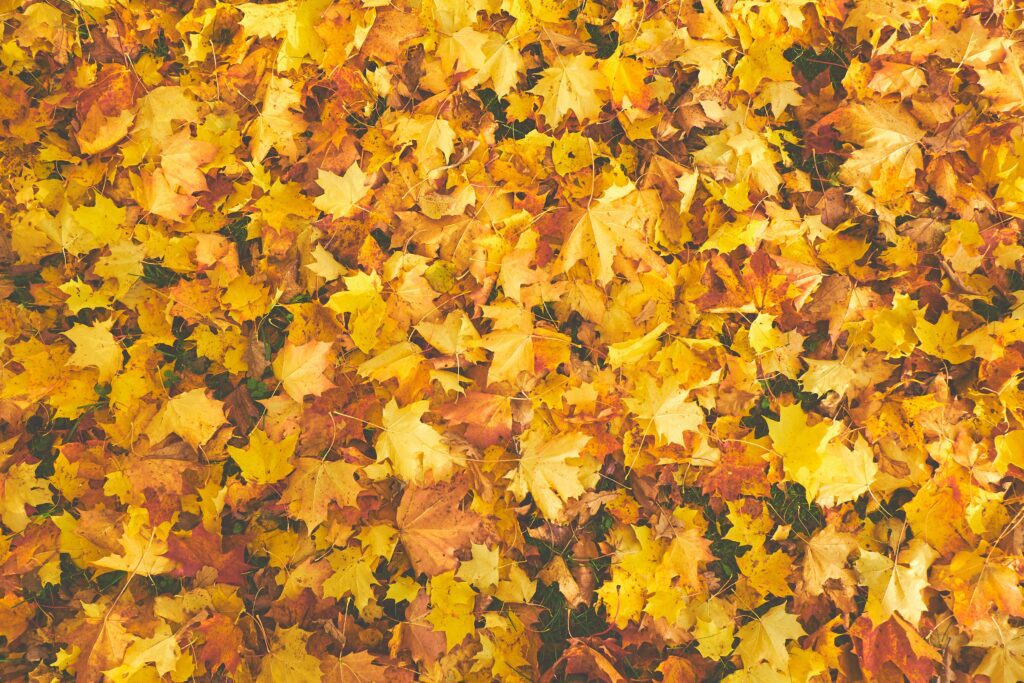Mowing your Colorado Springs lawn is more than a weekend chore; it’s essential to keeping your green space healthy and attractive. You may think the only purpose of mowing is to keep your grass from getting unruly. However, your mowing practice can actually help increase your lawn’s density and encourage deep root growth, two factors that can lead to grass that’s stronger and better able to resist weeds and environmental stress.
Because of Colorado Springs’ unique semi-arid climate and high elevations, lawn care can bring its fair share of challenges. Discover how proper mowing techniques and schedules can help your grass grow healthier and happier, whether the sun is shining or the snow is falling.
Understanding Lawn Mowing Basics
Before you fire up your mower and get to it, understanding lawn mowing basics ensures your grass will get healthier and hardier from mowing, and not the other way around. The basics of lawn mowing include:
- Mowing height
- Frequency
- Timing
- Patterns
Mowing Height
The optimal mowing height is determined by your grass type. Finely textured, horizontal leaf blades, like those found in fine fescues, can be cut shorter than coarser, upright-growing leaf blades, such as those found in tall fescue.
Even if you love the look of a tight, short lawn, it may not be the best thing for your grass to cut off too much at once or to cut too short. Removing too much grass length at once can be stressful for your lawn, resulting in long-term damage and grass that’s more susceptible to insects, disease, and drought. Higher mowing heights are also associated with deeper root formation.
A good general rule for grass height is to remove no more than 1/3 of the total length of grass at one time. The preferred height for any Colorado Springs lawn is 2.5 to 3 inches; don’t mow your grass below 2 inches. You can mow your grass at the same height all year long.
Mowing Frequency: How often should you mow your lawn?
Optimal mowing frequency is determined by your grass type’s growth rate, time of year, and weather conditions. However, most lawns will fall into a range of 10 to 14 days.
A bluegrass or fescue lawn may need mowing every three to four days during the spring during its active growth period but only once every seven to 10 days when drought, heat, or cold conditions slow its growth.
Depending on how much they are watered, a buffalograss lawn may only need to be mowed every 10-20 days.
Mow your lawn often enough that you never remove more than 1/3 of the height of the grass at one time. For example, if you want to keep your lawn height above 2 inches, the grass should be mowed once it hits a 3-inch height.
Mowing Timing: When is the best time to mow your lawn?
The best time for mowing in Colorado Springs can change based on the season and weather conditions.
It’s better to cut grass dry than wet; wet grass clippings can clog your mower and increase the risk of rut damage to your lawn. So you may mow mid-morning during the warm summer months after the morning dew has dried off in the sun. In the springtime, your grass may be drier in the afternoon.
While drier is better when mowing, it may be best to avoid cutting the lawn in the middle of the day during the summer months. The hot arid conditions and high elevation of Colorado Springs can bathe your lawn with heat and stress your freshly shorn grass.
Lawn Mowing Patterns: What is the best mowing pattern?
Sending those delightful criss-cross patterns across your lawn looks as good as it feels. Not only does a mowing pattern make your turf look as good as the Rockie’s Coors Field, but it also benefits the health of your grass.
Grass grows where your mower goes; the blades tend to grow in the direction they are mowed. Alternating mowing patterns can help the blades stand upright and prevent ruts from mower wheels.
Whether you utilize a spiral pattern, starting from the outside and working your way toward the middle, stripes, or circles, be sure to mix it up to keep your lawn healthy and happy.
Best Practices for Mowing
- Clear your lawn of sticks, stones, and debris before mowing to avoid injuries from flying objects and mower damage.
- Mow when the turf is dry: wet clippings can clog a mower.
- Sharpen your mower blades frequently to prevent tearing and damage.
- Mow in a different direction or pattern to prevent wear patterns and reduce lawn ruts.
- Leave clippings on the ground. Rake them out if they clump.
- Adjust your cutting height on a driveway or sidewalk.
- Never remove more than 1/3 of the grass blade at one time.
These basics set the stage. But what about the unique challenges in Colorado Springs?
Best Practices for Lawn Mowing in Colorado Springs
Ready to take your Colorado Springs lawn to the next level? General mowing practices are fine, but combining them with experience of our climate and grass types will really help your grass thrive.
Cool-Season Grasses
Kentucky bluegrass and tall fescues love chilly springs and falls. Set an optimal mower height of 2.5-3.5 inches to help them flourish.
Warm-Season Grasses
Buffalograss and other sun-lovers thrive in our hot, dry summer. Cut your warm-season grasses a tad shorter, around 2 to 3 inches. (But never shorter than 2 inches.)
Monitor Height
Let conditions determine the mowing frequency in Colorado Springs, not the calendar. In a dry week, your lawn’s growth might slow down and require less mowing. Always keep an eye on the grass length to determine how often to mow.
Leave Clippings
Grass clippings break down quickly. Leaving clippings on your grass can encourage earthworms and microorganisms that maintain healthy grass soil. Clippings contain nitrogen—the fertilizer most used by turf—and other beneficial nutrients. Clippings recycle nutrients when returned to the lawn and promote steady grass growth.
Avoiding Common Lawn Mowing Mistakes
Mistakes happen, but knowing them can prevent lawn damage: Avoid these common lawn mowing mistakes to keep your grass healthy, happy, and green.
- Cutting Too Short: Often called “scalping”, cutting grass too short can expose it to diseases. Don’t cut your Colorado Springs lawn below 2 inches.
- Mowing Wet Grass: mowing when wet can damage your mower and your lawn. Protect your grass and equipment by waiting until the dryest part of the day (or driest day of the week) before cutting.
- Using Dull Blades: Imagine cutting paper with dull scissors. You won’t get a clean cut, and you could shred the paper. Grass is no different. Regularly sharpen or replace your mower blades.
- Mowing in the Same Direction, Every Time: Just like walking the same path can wear out the carpet, mowing in one direction stresses grass. Variety is key, so get creative with your patterns and mix it up!
General Lawn Care Tips & Best Practices
Mowing is only part of your lawn care practice. If you want your Colorado Springs grass to look its best, make sure you’re also following these general best practices for Colorado lawn care.
Watering
Proper watering can promote a deeply rooted, healthier turf. When you water the lawn, apply enough water to moisten as much of the root zone as possible. Sandy soils require more frequent watering with smaller amounts of water, while grass growing on loamy-clay soil can be irrigated less frequently with larger quantities of water.
Let grass species, soil conditions, and weather conditions dictate irrigation practices, not the calendar.
Aeration
Seasonal aeration is essential for lawn health, especially those that are thatchy or subject to high traffic. Aerating, also known as core cultivating, improves the root zone.
Fertilization
Nitrogen is the most critical nutrient for promoting good lawn color and growth. However, do not oversaturate your lawn with excess nitrogen, especially during the spring and summer. Leaving clippings on your grass after mowing can help provide needed nitrogen.
Tending to a lawn in Colorado Springs is both an art and a science. Colorado lawns demand attention and understanding due to its semi-arid conditions and high elevations. But with the right practices, your lawn can reward you with lush beauty.
Invest time in understanding your lawn’s needs and changing conditions. The payoff? A vibrant, healthy, and stunning outdoor space that brings joy all year round. And if you ever feel overwhelmed, the local lawn care experts at J. Rick Lawn and Tree are always ready to help make sure the grass IS greener on your side of the fence.
While we do not offer lawn mowing services, we do offer a wide array of lawn and tree care services that help promote greener, weed-free lawns and lush beautiful trees.
Other Great Articles about Lawn Care Trips

Understanding How Pre-Emergent & Post-Emergent Weed Control Products Work
Weeds can be the bane of any homeowner’s lawn, especially in central Colorado. If you’re battling these pesky intruders, understanding the differences between the various weed control products available can be daunting. That’s why we’re going to explain the two main types of weed management products, pre-emergent and post-emergent herbicides. As you read on, you’ll…

The Complete Guide to Fall Lawn Care: Best Practices for Preparing Your Lawn for Winter
Is this your first fall as a Colorado Springs homeowner? Whether you’re ready to winterize your lawn for the first time or simply need a fall lawn care refresher for the home you’ve lived in for years, these essential lawn care basics will help you transition your lawn from the summer season to winter. Fall…

Demystifying Noxious Weeds: What Colorado Landowners Need to Know About Identification and Removal
Some weeds are a nuisance: they invade lawns and garden beds, fighting your plants and flowers for resources and interfering with the beauty of your yard. Other weeds are far more insidious, threatening the ecological health of Colorado. These weeds are known as noxious weeds. Noxious weeds, often deceptive in their appearance, threaten the balance…
